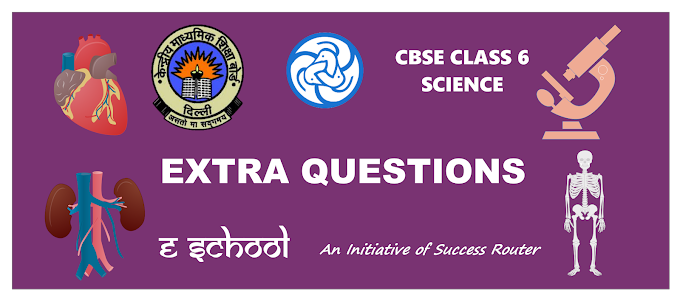Q.1. Given below are names of some animals:
(i) Goat
(ii) Human beings
(iii) Cockroach
(iv) Eagle
Which of the above animals form a pair of omnivores?
(a) (i) and (ii)
(b) (ii) and (iii)
(c) (iii) and (iv)
(d) (ii) and (iv)
Q.2. Honeybee makes honey from
(a) pollen
(b) petals
(c) nectar
(d) bud
Q.3. Below are names of some animals:
(i) Cow
(ii) Sheep
(iii) Horse
(iv) Ox
Which of the above are sources of milk for human beings?
(a) (i) and (iii)
(b) (i) and (ii)
(c) (ii) and (iii)
(d) (iii) and (iv)
Q.4. Given below is a list of edible plants:
(i) Banana
(ii) Pumpkin
(iii) Lady’s finger
(iv) Brinjal
Which pair of plants have two or more edible parts?
(a) (i) and (ii)
(b) (ii) and (iii)
(c) (iii) and (iv)
(d) (i) and (iv)
Q.5. The part of a banana plant not used as food is
(a) flower
(b) fruit
(c) stem
(d) root
Q.6. Read each set of terms and identify the odd set
(a) Cow, milk, butter
(b) Hen, meat, egg
(c) Goat, milk, meat
(d) Plant, vegetable, butter milk
7. Which one is not a function of food:
(a) Prepare protein
(b) Repair body parts
(c) Gives us energy
(d) Help in growth
Answer: (a) Prepare protein
Food gives us energy, help in growth and repair
body parts but do not prepare protein. We obtain protein from plants.
8. An example of complete food is
(a) Pulses
(b) Carrot
(c) Milk
(d) radish
Answer: (c) Milk
Milk is called as complete food as it contains all
the nutrients required for proper functioning of human body such as protein,
sugar and fat.
9. Curd is formed by the action of
(a) Algae
(b) Bacteria
(c) Virus
(d) Fungus
Answer: (b) Bacteria
Curd is made from milk by adding small amount of
starter containing large number of lactobacillus bacteria that convert milk
into curd.
10. Plants prepare their food by the process of
(a) Transduction
(b) Photosynthesis
(c) Transpiration
(d) Respiration
Answer: (b) Photosynthesis
Plants prepare their food by the process of
photosynthesis in the presence of sunlight, chlorophyll, carbon dioxide and water.
11. People living in coastal areas eat
(a) Maize and Bajara
(b) Rice, meat of goat
(c) Wheat, pulses and rice
(d) Rice and fish
Answer: (d) Rice and fish
People living in coastal areas generally eat rice
since they are easily available.
12. Green plants prepare their own food, hence they
are called as
(a) Autotrophs
(b) Parasites
(c) Heterotrophs
(d) Decomposers
Answer: (a) Autotrophs
Green pants prepare their food by the process of
photosynthesis. Hence green plants are called as autotrophs. (“auto” means self
and “troph” means nutrition)
13. Spices provide
(a) Vitamins
(b) Flavour
(c) Proteins
(d) Energy
Answer: (b) Flavour
Spices can only add flavour and taste to food
because it do not contain any kind of nutrients.
14. Which of the following digested by other
animals?
(a) A Lion
(b) A Cow
(c) A Tapeworm
(d) A Cockroach
Answer: (c) A Tapeworm
Among these tapeworms eats food digested by other
animals.
15. Which of the following animals does have teeth?
(a) Snake
(b) Eagle
(c) Mosquito
(d) Tapeworm
Answer: (a) Snake
Snake do not have teeth although they have tongue,
mouth and tail. So they engulf the food without chewing.
16. Honeybee makes honey from
(a) Nectar
(b) petals
(c) Pollen
(d) Sepals
Answer: (a) Nectar
Honeybee makes honey from nectar collected from
flowers.
17. Cereals are rich source of
(a) Proteins
(b) Fats
(c) Carbohydrates
(d) Vitamins
Answer: (c) Carbohydrates
Rice, wheat and maize are main cereals which are
rich source of carbohydrates for human beings.
18. Carnivores have
(a) Sharp pointed teeth
(b) Broad and strong teeth
(c) Blunt teeth
(d) Long sticky teeth
Answer: (a) Sharp pointed teeth
Carnivorous have sharp pointed teeth to tear the
flesh of animals.


0 Comments